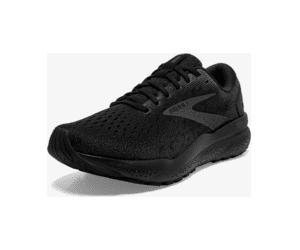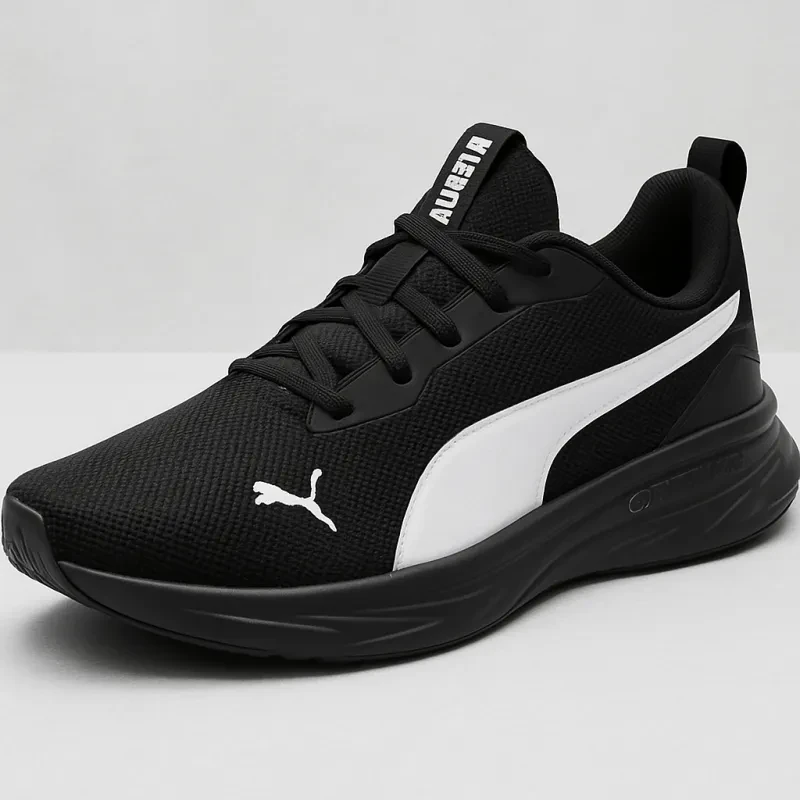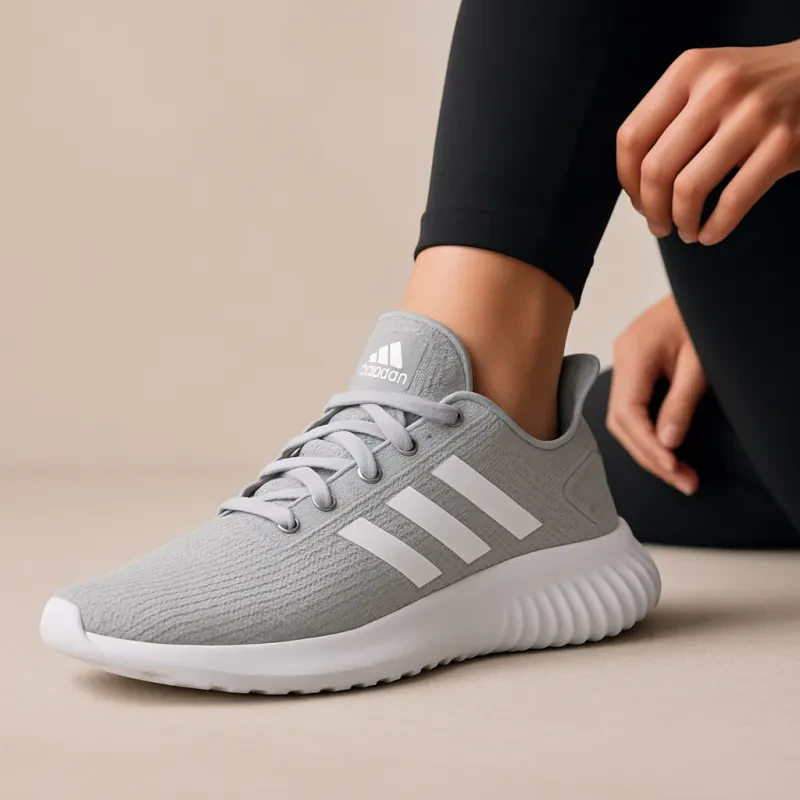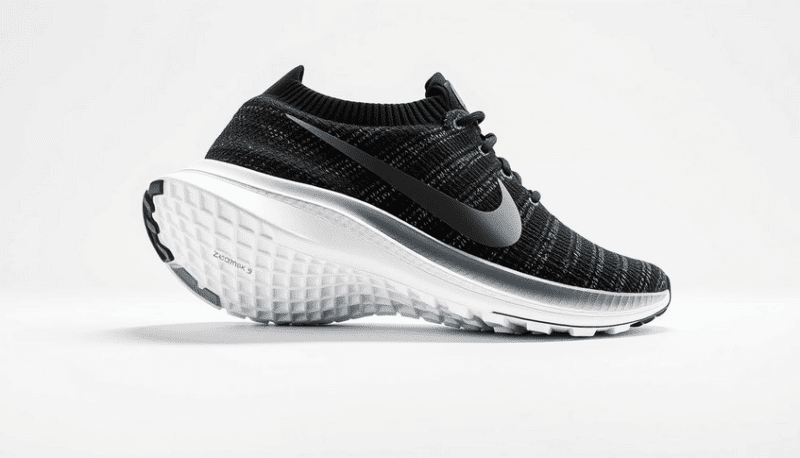Brooks offers two popular running shoe models: the Ghost 16 and the Adrenaline GTS 23. These shoes cater to different running styles and foot types. The Ghost 16 is a neutral shoe that works well for runners with normal arches, while the Adrenaline GTS 23 is a stability shoe designed for those who need extra support.

The main difference between the Ghost 16 and Adrenaline GTS 23 is their support level. The Ghost 16 offers cushioning and comfort for neutral runners. The Adrenaline GTS 23 includes GuideRails technology to help control excess foot movement, making it a good choice for runners who overpronate or need more stability.
Both shoes feature Brooks' DNA LOFT cushioning for a soft, comfortable ride. They also have breathable mesh uppers and durable outsoles. The choice between these two models comes down to a runner's specific needs and preferences.
Key Takeaways
- The Ghost 16 is a neutral shoe, while the Adrenaline GTS 23 offers stability features
- Both models use DNA LOFT cushioning for comfort and support
- Runners should choose based on their foot type and support needs
Essential Features of Running Shoes

Good running shoes have key elements that affect performance and comfort. These features work together to support runners and prevent injuries during training or races.
Cushioning and Responsiveness
Cushioning protects feet from impact when running. Foam materials like EVA or polyurethane absorb shock. Some shoes use air or gel units for extra cushioning.
Responsive cushioning returns energy to the runner, helping with speed and reducing fatigue. Many brands now use special foams or carbon fiber plates for better bounce-back.
Cushioning needs vary by runner. Long-distance runners often want more cushion, while sprinters may prefer less for a firmer feel.
Support and Stability
Support features help control foot motion, which is key for runners who overpronate. Stability shoes use firmer foam on the inner side and may have plastic pieces in the midsole.
Neutral shoes offer less motion control. They work for runners with normal arches who don't need extra support.
Arch support is another factor. Some shoes have built-in arch support, and others let runners add their own insoles.
Fit and Comfort
A good fit is crucial for comfort and performance. Shoes should have enough room in the toe box. The midfoot should feel snug but not tight.
The heel should not slip when running. Many shoes have extra padding around the ankle for comfort.
Some brands offer multiple widths. This helps runners find the right fit for their foot shape.
Breathable materials keep feet cool and dry. Mesh uppers are common for air flow.
Design and Materials
Upper materials affect fit, breathability, and durability. Mesh is light and airy, while knit uppers offer a sock-like fit.
Outsoles provide traction. Rubber is common, with different grip patterns. Trail shoes have deeper lugs for off-road use.
Midsoles are the core of cushioning and support. EVA foam is popular because it is lightweight, but some shoes use TPU or other advanced foams.
Reflective elements add safety for night runs. Bright colors can increase visibility too.
Weight Considerations
Shoe weight affects speed and energy use. Lighter shoes can help runners go faster.
Racing flats are very light for short races. Daily trainers are a bit heavier but more durable.
Cushioning and support features add weight. Brands try to balance protection and lightness.
Some runners prefer lighter shoes for speed work, while others might choose heavier, more cushioned shoes for long runs.
Brooks Ghost 16 Overview

The Brooks Ghost 16 is a popular neutral running shoe known for its comfort and versatility. It offers a balance of cushioning and responsiveness for everyday training runs.
Cushioning Technology
The Ghost 16 uses DNA LOFT v3 foam in its midsole. This nitrogen-infused cushioning provides a soft and responsive feel underfoot. The foam extends throughout the length of the shoe for consistent comfort.
Brooks added more DNA LOFT v3 to the Ghost 16 than past models. This gives a plusher ride without adding extra weight. The 12mm heel-to-toe drop remains unchanged from earlier versions.
The shoe's stack height is 34.5mm in the heel and 22.5mm in the forefoot. This cushioning is good for long runs and recovery days.
Targeted Runner Profile
The Ghost 16 suits neutral runners looking for a reliable daily trainer. It works for a range of paces from easy jogs to tempo runs.
New runners often like the Ghost for its forgiving ride and simple design. More experienced runners use it as a go-to shoe for logging high weekly mileage.
The Ghost 16 fits true to size for most people. Its roomy toe box accommodates a variety of foot shapes.
Design Evolution
Brooks made small tweaks to improve the Ghost 16 over the Ghost 15. The upper now uses engineered air mesh for better breathability.
3D Fit Print overlays provide structure without adding bulk. This helps the shoe adapt to different foot shapes.
The outsole keeps its segmented crash pad design. This allows for smoother heel-to-toe transitions during the gait cycle.
Brooks also offers the Ghost Max for runners wanting even more cushioning. The Max version has a higher stack height and bouncier feel.
Brooks Adrenaline 23 Features

The Brooks Adrenaline 23 is a stability shoe designed for runners who need extra support. It offers key technologies to help control overpronation and provide a smooth ride.
Supportive Technologies
The Adrenaline 23 uses GuideRails technology. This system helps keep excess movement in check. It focuses on the knees, which are most prone to running-related injuries.
GuideRails act like bumpers on a bowling alley. They let your feet and legs move naturally. But they step in when you start to move too far off course.
The midsole has DNA LOFT cushioning. This soft but durable foam gives a plush feel without sacrificing responsiveness.
Adrenaline GTS Series
GTS stands for "Go-To Support." The Adrenaline is Brooks' flagship stability shoe. It's been a trusted choice for runners for over 20 years.
Each new version aims to improve on the last. The Adrenaline 23 keeps the support runners love. But it adds updates to enhance comfort and performance.
The shoe works well for various foot types. It's good for runners with flat feet or low arches and helps those who tend to roll their feet inward when running.
Design Improvements
The Adrenaline 23 has a redesigned upper. It uses engineered air mesh, which is light and breathable and adapts to your foot shape for a custom-like fit.
The shoe has a 12mm heel-to-toe drop. This is standard for stability shoes. It helps promote a natural foot strike.
Brooks added more flex grooves to the outsole. These cuts in the rubber make the shoe more flexible. This change helps create a smoother transition from heel to toe.
The Adrenaline 23 is available in various colors and widths, helping runners find the right fit and style for their needs.
Comparative Analysis

The Brooks Ghost 16 and Adrenaline GTS 23 offer different features for runners. These shoes cater to varying needs and preferences in daily training.
Performance for Daily Training
The Ghost 16 and Adrenaline GTS 23 excel as daily trainers. Both provide cushioning for long runs and everyday use.
The Ghost 16 offers a softer ride with its DNA LOFT v2 cushioning. This makes it ideal for runners who want comfort on longer distances.
Adrenaline GTS 23 uses DNA LOFT cushioning with added stability features. It suits runners who need extra support during their daily runs.
Both shoes are durable enough for regular training. They can handle high mileage without losing their cushioning properties.
Stability vs. Neutral Support
The main difference between these shoes is their support type. Ghost 16 is a neutral shoe, while Adrenaline GTS 23 provides stability.
Ghost 16 allows for natural foot movement. It's best for runners with normal arches who don't overpronate.
Adrenaline GTS 23 features GuideRails technology. This helps control excess movement and supports overpronators.
The stability in Adrenaline doesn't feel intrusive. It gently guides the foot without forcing a specific motion.
Runners prone to injuries may prefer the added support of Adrenaline GTS 23.
Running Experience Customization
Both shoes offer ways to customize the running experience. They cater to different foot shapes and running styles.
Ghost 16 has a roomy toe box. This allows toes to spread naturally during runs.
Adrenaline GTS 23 offers a more secure fit. Its upper wraps the foot snugly for better stability.
Both shoes come in multiple widths. This helps runners find the best fit for their foot shape.
The Ghost 16 feels lighter on foot. It's good for runners who want a more responsive feel.
Adrenaline GTS 23 provides a more structured feel. It's ideal for runners who need consistent support throughout their run.
Practical Considerations
The Brooks Ghost 16 and Adrenaline 23 have key differences in durability, traction, fit, and value. These factors can greatly impact a runner's experience and shoe choice.
Durability and Longevity
Both the Ghost 16 and Adrenaline 23 use high-quality materials for long-lasting wear. The Ghost 16 has a durable rubber outsole that resists wear on road surfaces. Its DNA LOFT midsole keeps its cushioning properties over many miles.
The Adrenaline 23 features a similar outsole but adds GuideRails support. This may slightly reduce flexibility but can increase durability for overpronators. Both shoes typically last 400-500 miles for most runners.
Both models' breathable mesh uppers resist tearing and maintain their shape well. The Adrenaline's added support structures may give it a slight edge in overall longevity.
Traction and Surface Adaptability
The Ghost 16 and Adrenaline 23 offer good traction on various surfaces. Their rubber outsoles have flex grooves and textured patterns for grip on roads and light trails.
The Ghost 16 has a more flexible outsole, which allows for better ground feel and adapts well to uneven terrain. Its softer rubber compound gives good traction in wet conditions.
The Adrenaline 23's firmer outsole provides more stability, so it may feel more secure on slippery surfaces. Both shoes perform best on roads but can handle occasional off-road use.
Neither shoe is ideal for technical trails or extreme weather. However, both offer reliable traction and adaptability for most everyday runs.
Fit for Unique Biomechanics
The Ghost 16 and Adrenaline 23 cater to different foot types and running styles. The Ghost 16 suits neutral runners with medium to high arches. Its flexible design allows natural foot movement.
The Adrenaline 23 targets runners who overpronate or need extra support. Its GuideRails system helps align the feet and reduce excess motion. This can benefit runners with flat feet or knee pain.
Both shoes offer a roomy toe box and secure heel fit. The Ghost 16 has a slightly wider midfoot, while the Adrenaline 23 provides more arch support.
Runners with high arches may prefer the Ghost's softer cushioning. Those with plantar fasciitis might find relief in the Adrenaline's added stability.
Financial and Value Aspect
The Ghost 16 and Adrenaline 23 are similarly priced premium running shoes. Their cost reflects their quality materials and advanced technologies.
The Ghost 16 offers great value for neutral runners seeking comfort and versatility. Its durable design and responsive cushioning make it suitable for various distances and paces.
The Adrenaline 23 provides excellent value for runners needing stability. Its support features can help prevent injuries, potentially saving on medical costs.
Both shoes use some recycled materials, appealing to eco-conscious buyers. Their longevity also contributes to their overall value, as they may outlast cheaper alternatives.
The choice between Ghost and Adrenaline often comes from personal preference and running style. Trying both on can help determine which offers the best fit and feel for the price.
Closing Thoughts
The Brooks Ghost 16 and Adrenaline GTS 23 cater to different runner needs. The Ghost 16 offers neutral cushioning for those seeking comfort without added stability features. It provides a smooth ride for runners with a neutral gait.
The Adrenaline GTS 23 includes stability features like GuideRails for overpronators. This added support helps control excess foot motion during runs. It's ideal for those needing more structure in their footwear.
Both shoes showcase Brooks' commitment to quality and performance. They use premium materials and incorporate the latest cushioning technologies, ensuring durability and comfort mile after mile.
When choosing between these models, runners should consider their foot type and running style. Those with neutral feet may prefer the Ghost 16, while runners needing extra support might find the Adrenaline GTS 23 more suitable.
Trying on both shoes and taking them for a test run can help determine the best fit. Personal comfort and feel are crucial factors in selecting the right running shoe. With either choice, runners can expect a well-crafted shoe from a trusted brand.
Frequently Asked Questions
Brooks Ghost 16 and Brooks Adrenaline GTS 23 are popular running shoes with key differences. Let's explore how they compare in terms of design, features, and suitability for different runners.
What are the main differences between the Brooks Ghost 16 and the Brooks Adrenaline GTS 23 models?
The Brooks Ghost 16 is a neutral running shoe, while the Adrenaline GTS 23 is a stability shoe. The Ghost 16 offers a softer, more cushioned ride for runners with a neutral gait.
The Adrenaline GTS 23 provides extra support and guidance for runners who overpronate. It has GuideRails technology to help keep the foot aligned during runs.
Which shoe, Brooks Ghost 16 or Brooks Adrenaline 23, is better suited for flat feet?
The Brooks Adrenaline GTS 23 is generally better for flat feet. It offers more arch support and stability features that can help with overpronation, which is common in runners with flat feet.
The Ghost 16 is a neutral shoe that may not provide enough support for those with flat feet. It's designed for runners who don't need extra stability.
How do Brooks Ghost 16 and Brooks Adrenaline 23 compare regarding cushioning and support?
Both shoes offer good cushioning but in different ways. The Ghost 16 has softer, more responsive cushioning for a plush feel. It uses DNA LOFT v2 foam for a smooth ride.
The Adrenaline GTS 23 has firmer cushioning with added support. It uses DNA LOFT foam and GuideRails support system for a stable, cushioned experience.
Can the Brooks Adrenaline GTS 23 be used effectively for walking, and how does it compare to the Ghost 16?
Yes, the Brooks Adrenaline GTS 23 can be used for walking. Its stability features and cushioning make it comfortable for long walks.
The Ghost 16 is also good for walking, offering a softer feel. The Adrenaline GTS 23 might be the better choice for those who need extra support while walking.
What type of runner would benefit most from the Brooks Adrenaline 23's features?
The Brooks Adrenaline 23 is best for runners who overpronate or need extra stability. It's ideal for those with flat feet or low arches.
Runners who experience knee or hip pain during runs might also benefit from the Adrenaline's GuideRails support system. It helps keep joints aligned.
Are the Brooks Ghost 16 running shoes considered a good choice for overpronators?
The Brooks Ghost 16 is not the best choice for overpronators. It's a neutral shoe designed for runners with a normal pronation pattern.
Overpronators should consider the Adrenaline GTS 23 instead. It offers the stability features to correct overpronation and provide a more supported run.
DISCLAIMER
This document is provided for general information purposes only and should not be relied upon as providing legal advice, technical, or specific operational guidance to the reader, whether as to the practices described in the document or the applicable legal requirements and regulations.{ WEBSITE} expressly disclaims any responsibility for liability arising from or related to the use or misuse of any information in this document.



